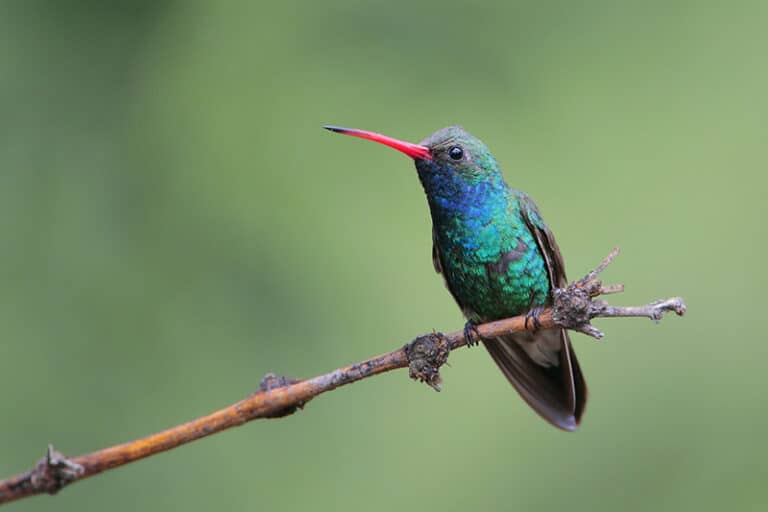If hummingbirds are your thing, the summer rain season is the time to be in Southeast Arizona when diversity is at its peak. A rare migrant species from Mexico, the Lucifer Hummingbird is a sought-after bird whose range barely makes it into the US here and Texas. They can be found mostly in Chihuahuan desert canyons and hillsides where agave, ocotillo, sotol, and cacti dominate. Almost a sure bet is seeing them on a trip to the Huachuca Mountains and the feeders at the Ash Canyon Bird Sanctuary, long a hotspot for the species. There’s seemingly no evidence for the bird being associated with Satan. Lucifer means “light-bearing” in Latin and is the name of various figures in folklore linked with the planet Venus, the light-bringer of a personified dawn. One can assume the light being referred to in this case is the beautiful iridescent and flaring, purple gorget of the Lucifer Hummingbird. A tiny member of the group of sheartail hummingbirds characterized by narrow and deeply forked tails, the species is also identified by its strongly decurved bill.
Lucifer Hummingbirds have an interesting relationship with agaves—the plants are adapted to be pollinated by bats, but the birds “nectar rob” from the flowers, providing no pollination services because they are too small to make contact with the pollen-producing anthers. In turn, dead agave stalks are prime habitat for carpenter bees that nectar rob from ocotillo flowers, depriving the birds of a food source. Unique to all hummingbirds, male Lucifer Hummingbirds perform flight displays at the nests of females, not in feeding areas or group display sites.
Image by Greg Lavaty




